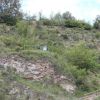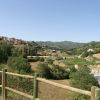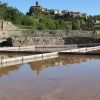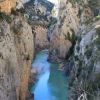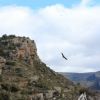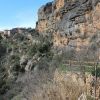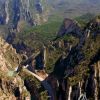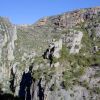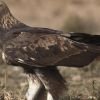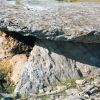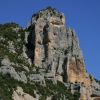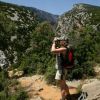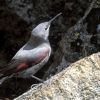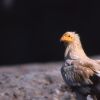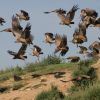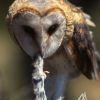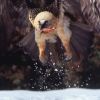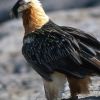Ecosistema Rupícola
Route Viñero Mountain. Naval

Technical information
Type of route: circular hiking route
Departure point: Naval
KM: 2,8
Duration: 45 min
Gradient: 40 m
MIDE: 1-2-2-1
Access
About 1 km before reaching Naval, take the way to the salt pans, where you will park the car and begin the circular route on foot.
Route description
2,8 km walking circular route that runs along various habitats, among which we may single out the linear riverbank wooded area of the Ravine of Llastra, as well as the cereal, almonds and olive cultivated fields, with ruderal vegetation on the banks; the entire route is bordered by a small limestone relief, mainly covered by aleppo pines and holm oak woodland vegetation, together with an undergrowth of scrubland, dominated by hawthorns.
Main Species
Representative bird: Red Kite (Milvus milvus)
Residents: Red-legged Partridge, Red Kite, Lammergeyer, Griffon Vulture, Eurasian Sparrowhawk, Common Buzzard, Common Kestrel, Rock Dove, Stock Dove, Wood Pigeon, Eagle Owl (rare), Little Owl, Long-eared Owl, Hoopoe, Green Woodpecker, Great Spotted Woodpecker, Crested Lark, Wood Lark, Crag Martin, Pied Wagtail, Eurasian Wren, European Robin, Black Redstart, Blue Rock Thrush, Mistle Thrush, Blackbird, Eurasian Blackcap, Sardinian Warbler, Common Firecrest, Long-tailed Tit, Crested Tit, Coal Tit, Blue Tit, Great Tit, Eurasian Jay, Magpie, Eurasian Jackdaw, Carrion Crow, Common Raven, Spotless Starling, Common Starling, House Sparrow, Eurasian Tree Sparrow, Rock Sparrow, Chaffinch, European Serin, European Greenfinch, European Goldfinch, Linnet, Red Crossbill (irruptive), Cirl Bunting, Rock Bunting, Corn Bunting.
Summer migrants: Black Kite, Egyptian Vulture, Short-toed Snake Eagle, Booted Eagle, European Turtle Dove, Common Cuckoo, European Nightjar, Red-necked Nightjar, Common Swift, European Bee-eater, Barn Swallow, Red-rumped Swallow, House Martin, Common Nightingale, Black-eared Wheatear, Common Rock Thrush, Melodious Warbler, Subalpine Warbler, Western Orphean Warbler, Bonelli’s Warbler, Spotted Flycatcher, Eurasian Golden Oriole, Woodchat Shrike.
Winter visitors: Northern Goshawk, Merlin, Eurasian Skylark, Meadow Pipit, Alpine Accentor, Fieldfare, Song Thrush, Chiffchaff, Goldcrest, Brambling (rare), Eurasian Siskin (irruptive), Hawfinch, Yellowhammer.
Passage migrants: European Honey-buzzard, Harriers, Common Crane, Eurasian Woodcock (rare), Tree Pipit, Water Pipit, Common Redstart, Northern Wheatear, Redwing, Willow Warbler, Garden Warbler, Common Whitethroat, Pied Flycatcher.
Photo gallery
Map
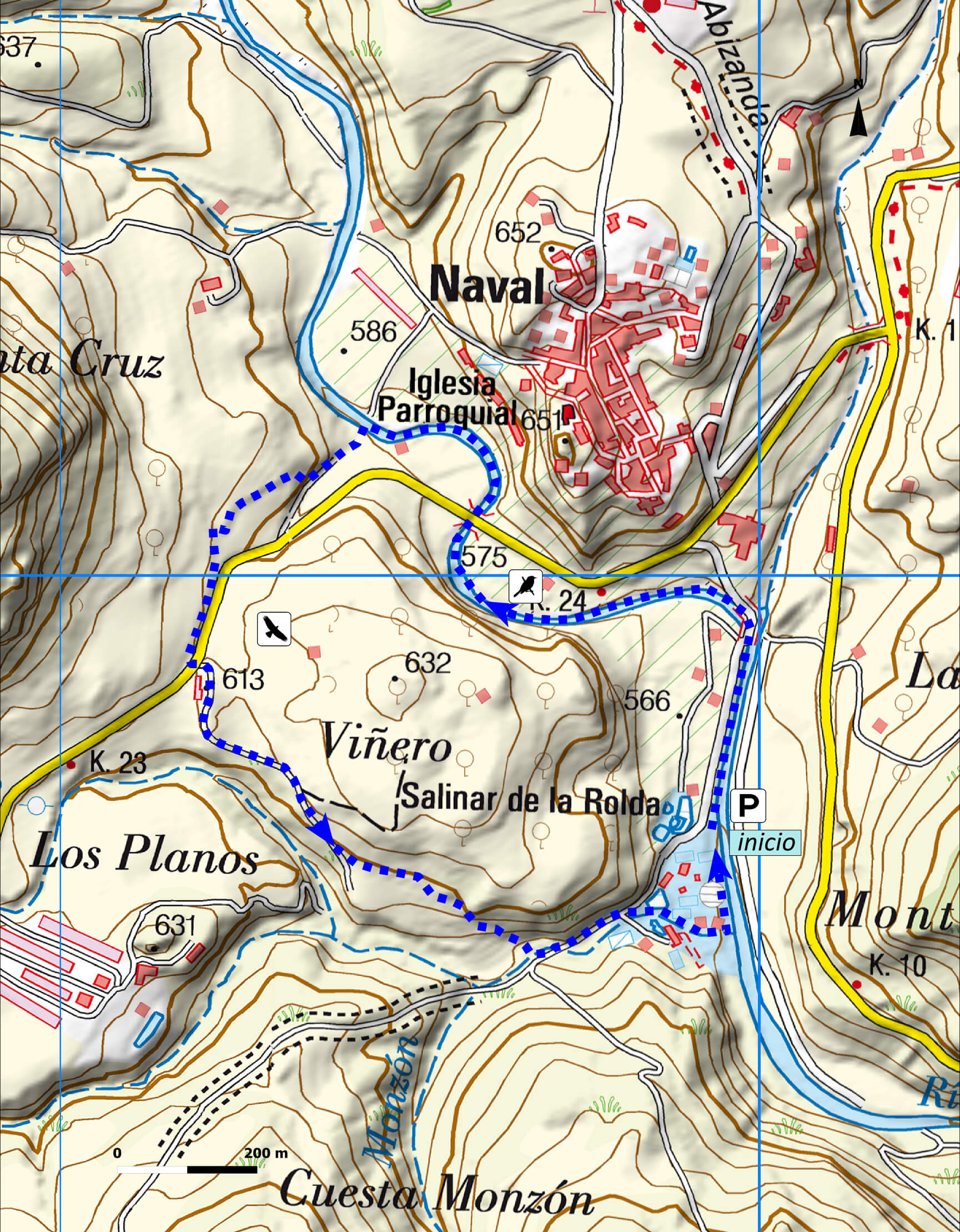
Route Gorge of Olvena
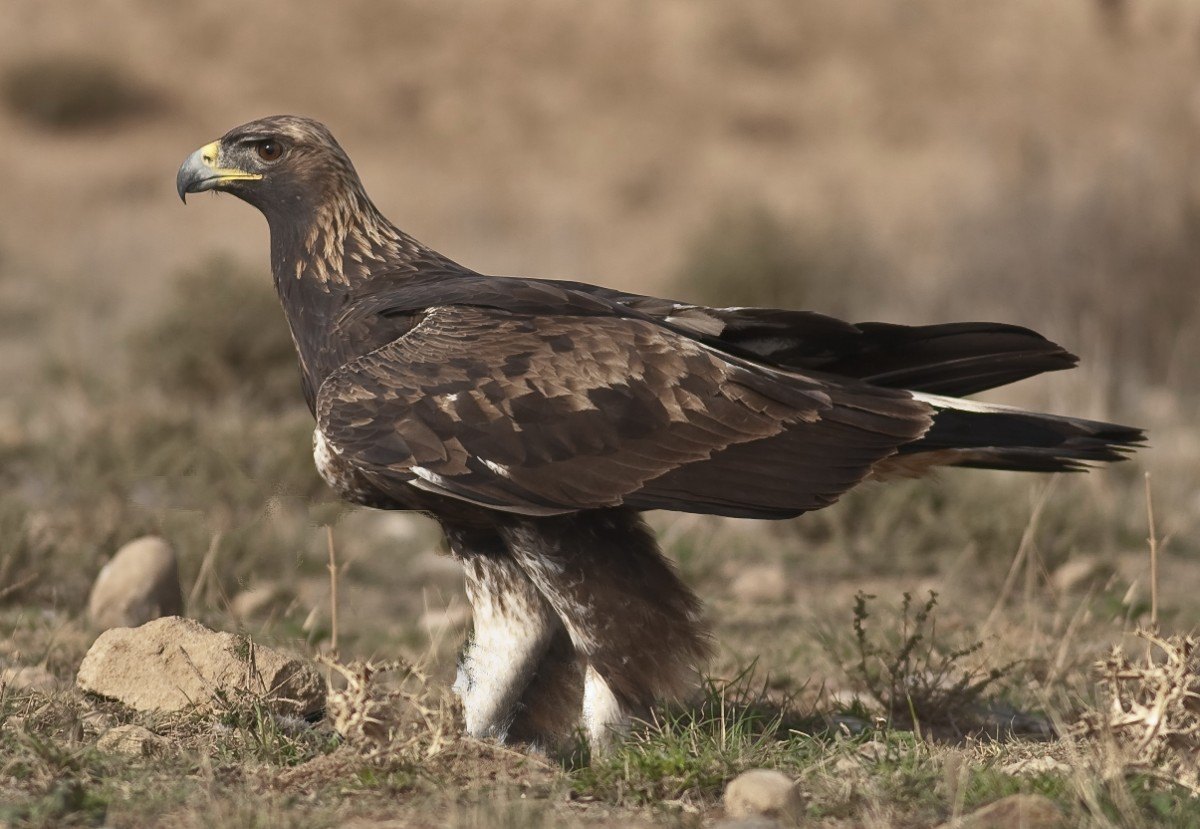
Technical information
Type of route: circular hiking route
Punto de inicio: Olvena
KM: 2,2
Duration: 40 min
Gradient: 40 m
MIDE: 1-2-1-1
Difficulty:
Access
In Olvena follow the road A-2211 to Puebla de Castro. At about half a kilometre, make a right turn onto a dirt track, walk for about 600 metres and return along a track parallel to the road and the mountain pass which leads to the village (2,2 km in total). In addition, it is possible to stop at the Congosto balcony and in “Camino del Canaíllo” to better enjoy the views of the gorge and the rocky birds living there.
Route description
Circular route of 2,2 km. It starts covering 500 metres on the road from Olvena to Puebla de Castro, we then turn right onto a dirt track and, after about 600 metres, we take another track heading South that will lead us back to Olvena.
The route passes through cultivated fields, near the gorge, and it is easy to observe large predators that use these agricultural fields as forage area. We also recommend approaching the balcony of Congosto and the “Camino del Canalillo” to have best views of the gorge and the rocky birds living there.
Main Species
Representative bird: Golden Eagle (Aquila chrysaetos)
Residents: Red-legged Partridge, Red Kite, Griffon Vulture, Eurasian Sparrowhawk, Common Buzzard, Common Kestrel, Peregrine Falcon, Golden Eagle, Bonelli’s Eagle (rare), Rock Dove, Stock Dove, Wood Pigeon, Eagle Owl (rare), Little Owl, Long-eared Owl, Hoopoe, Green Woodpecker, Great Spotted Woodpecker, Crested Lark, Thekla Lark, Wood Lark, Crag Martin, Pied Wagtail, Eurasian Wren, European Robin, Black Redstart, Blue Rock Thrush, Mistle Thrush, Blackbird, Dartford Warbler, Sardinian Warbler, Common Firecrest, Long-tailed Tit, Crested Tit, Coal Tit, Blue Tit, Great Tit, Eurasian Jay, Magpie Eurasian Jackdaw, Carrion Crow, Common Raven, Spotless Starling, Common Starling, House Sparrow, Eurasian Tree Sparrow, Rock Sparrow, Chaffinch, European Serin, European Greenfinch, European Goldfinch, Linnet, Cirl Bunting, Rock Bunting, Corn Bunting.
Summer migrants: Black Kite, Egyptian Vulture, Short-toed Snake Eagle, Booted Eagle, European Turtle Dove, Common Cuckoo, Red-necked Nightjar, Common Swift, Alpine Swift, European Bee-eater, Barn Swallow, House Martin, Common Nightingale, Black-eared Wheatear, Common Rock Thrush, Melodious Warbler, Subalpine Warbler, Western Orphean Warbler, Bonelli’s Warbler, Spotted Flycatcher, Eurasian Golden Oriole, Woodchat Shrike.
Winter visitors: Northern Goshawk, Merlin, Eurasian Skylark, Meadow Pipit, Alpine Accentor, Fieldfare, Song Thrush, Eurasian Blackcap, Chiffchaff, Goldcrest, wallcreeper (rare), Brambling (rare), Eurasian Siskin (irruptive), Hawfinch, Yellowhammer.
Passage migrants: European Honey-buzzard, Harriers, Common Crane, Eurasian Woodcock (rare), Tree Pipit, Water Pipit, Common Redstart, Northern Wheatear, Redwing, Willow Warbler, Garden Warbler, Common Whitethroat, Pied Flycatcher.
Photo gallery
Map
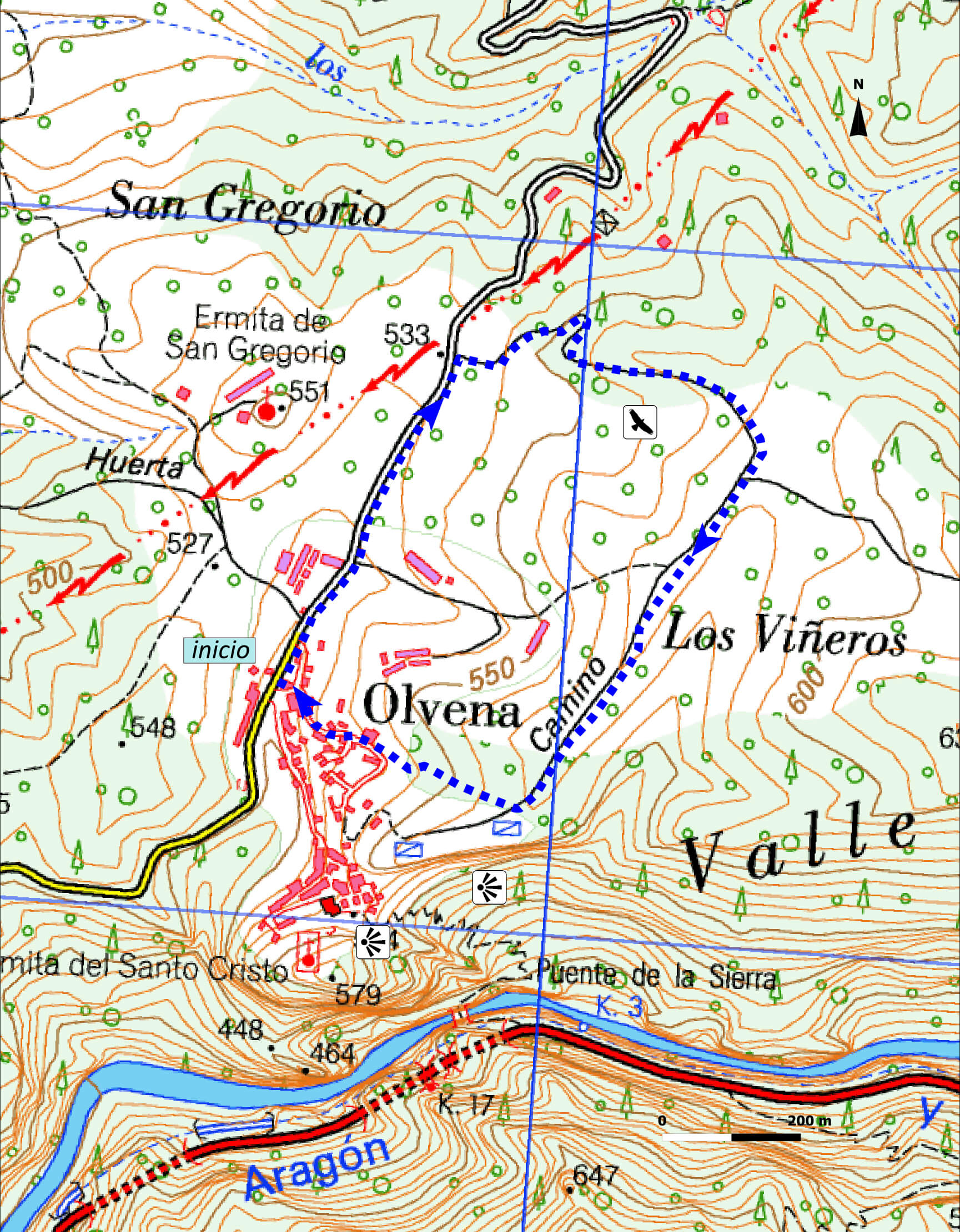
Route Dolmen Losa Mora. Rodellar
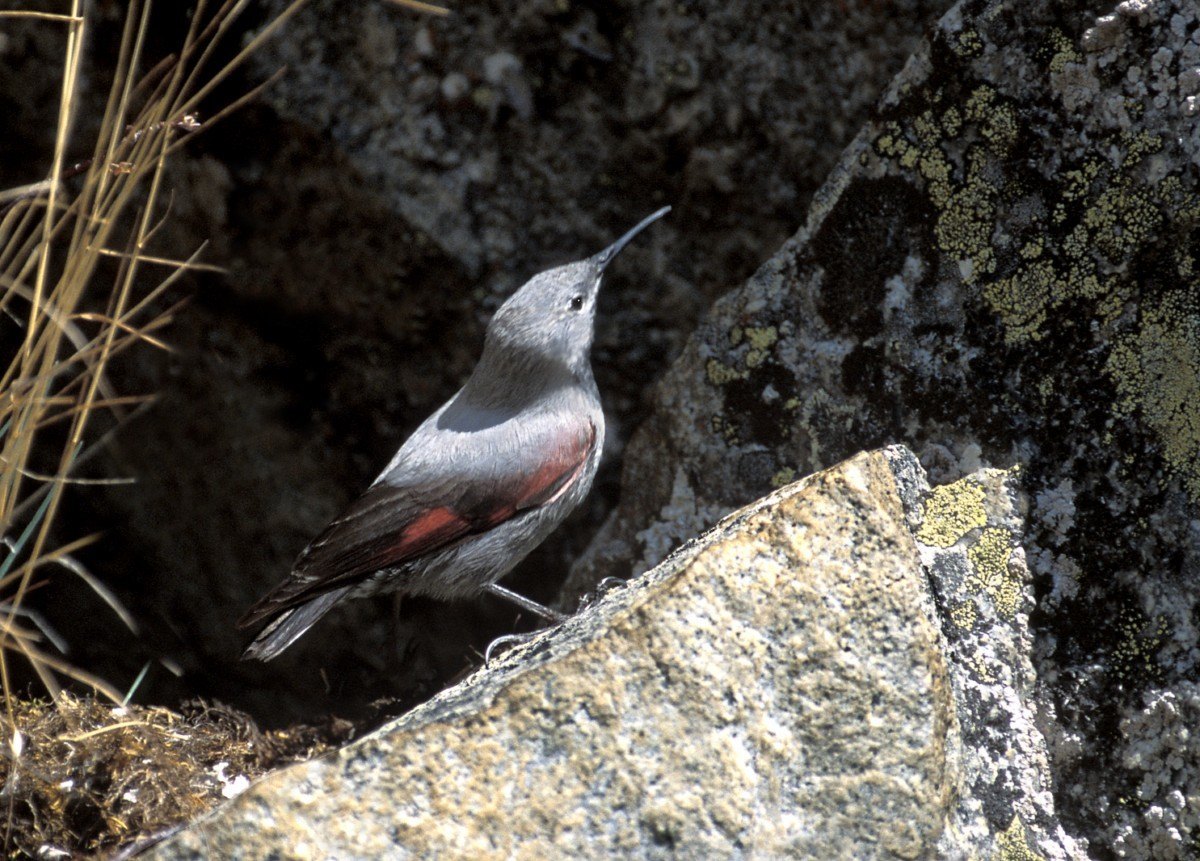
Technical information
Type of route: return hiking route
Departure point: Rodellar
KM: 9
Duration: 3 h
Gradient: 350 m
MIDE: 2-2-2-2
Access
On A-22 take 77 exit to Abiego (taking the road A-1229). Once in Abiego, take road A-1227 towards Bierge. Then take HU-341 until you reach Rodellar (18 km). In Rodellar, follow the signposts to the Hermitage of Virgen del Castillo, descend to the bottom of the ravine while following the signposts to Mascún, then begin to overcome towards the cave of Andrebot (and the ravine which has the same name) until you reach the dolmen of La Losamora.
Route description
The route begins at the Northern sector of Rodellar, in the neighborhood of La Honguera, where we take downhill towards the Mascún riverbed. The path passes nearby the signpost to the Ravine of Mascún, and continues until you see an arrow which indicates the Dolmen of Losa Mora on the left, and ascends by the Ravine of Andrebot. The entire path runs through a rocky atmosphere. We return by the same path.
Main Species
Representative bird: Wallcreeper (Tichodroma muraría)
Residents: Lammergeyer, Griffon Vulture, Eurasian Sparrowhawk, Common Buzzard, Common Kestrel, Peregrine Falcon, Golden Eagle, Rock Dove, Stock Dove, Wood Pigeon, Eagle Owl (rare), Green Woodpecker, Great Spotted Woodpecker, Crag Martin, Pied Wagtail, Grey Wagtail, White-throated Dipper (rare), Eurasian Wren, European Robin, Black Redstart, Blue Rock Thrush, Mistle Thrush, Blackbird, Sardinian Warbler, Common Firecrest, Long-tailed Tit, Crested Tit, Coal Tit, Blue Tit, Great Tit, Eurasian Jay, Magpie, Alpine Chough, Eurasian Jackdaw, Carrion Crow, Common Raven, House Sparrow, Eurasian Tree Sparrow, Rock Sparrow, Chaffinch, European Serin, European Greenfinch, European Goldfinch, Linnet, Red Crossbill (irruptive), Cirl Bunting, Rock Bunting.
Summer migrants: Black Kite, Egyptian Vulture, Short-toed Snake Eagle, Booted Eagle, European Turtle Dove, Common Cuckoo, Common Swift, Alpine Swift, European Bee-eater, Barn Swallow, House Martin, Common Nightingale, Black-eared Wheatear, Common Rock Thrush, Melodious Warbler, Bonelli’s Warbler, Spotted Flycatcher, Eurasian Golden Oriole.
Winter visitors: Meadow Pipit, Alpine Accentor, Fieldfare, Song Thrush, Eurasian Blackcap, Chiffchaff, Goldcrest, Wallcreeper, White-winged Snowfinch (rare), Brambling (rare), Eurasian Siskin (irruptive), Hawfinch, Yellowhammer.
Passage migrants: European Honey-buzzard, Harriers, Black Stork (rare), Common Crane, Eurasian Woodcock (rare), Tree Pipit, Water Pipit, Common Redstart, Redwing, Willow Warbler, Garden Warbler, Common Whitethroat, Pied Flycatcher.
Photo gallery
Map

Rupicolous environment

The natural architecture of stone and rock is the dominant feature of the landscape in the northern expanse of Somontano.
The majestic Lammergeyer (Gypaetus barbatus), is one of the rarest European birds of prey and the Guara National park protects 10 breeding pairs; one of the highest concentrations of lammergeyers to be found anywhere. It picks up bones abandoned by other carrion-eaters, and hurls them against rocks to break them up for eating.
The cliff edges also provide shelter to another bird of prey; the Griffon Vulture (Gyps fulvus). They live in colonies where breeding pairs, young adults and venerable old birds, with their white collars, live side-by-side. There is an abundance of breeding colonies in Somontano, in and around the canyons of Balced, Los Fornazos de Morrano, Mascún in Rodellar and Olvena. The Carrodilla mountain range is a popular location for groups of birds to sleep in safety.
The final addition to the list of carnivorous birds is the Egyptian Vulture (Neophron percnopterus). These birds appear in pairs from the north of Africa during the first few weeks of March and settle down in the same nesting spots, year after year.
There is also an abundance of red and black kites (Milvus milvus, Milvus nigrans) and distinct species of corvids. The fast and agile Peregrine Falcons (Falco peregrinus) are still thriving on the cliff edges and canyon shelves, sharing space with the Common Kestrel (Falco tinnunculus).
The queen of the birds is the Golden Eagle (Aquila chrysaetos), which is raised from young in the precarious niches of the rocky walls, as is the Eagle Owl (Bubo bubo).
Colonies of Alpine Swifts (Apus melba) and Crag Martins (Ptyonoprogne rupestris) are also present in this rocky environment, and in the colder months, Wall Creepers (Tichodroma muraria) and Alpine Accentor (Prunella collarlis) are also known to frequent the cliffs of Somontano.



